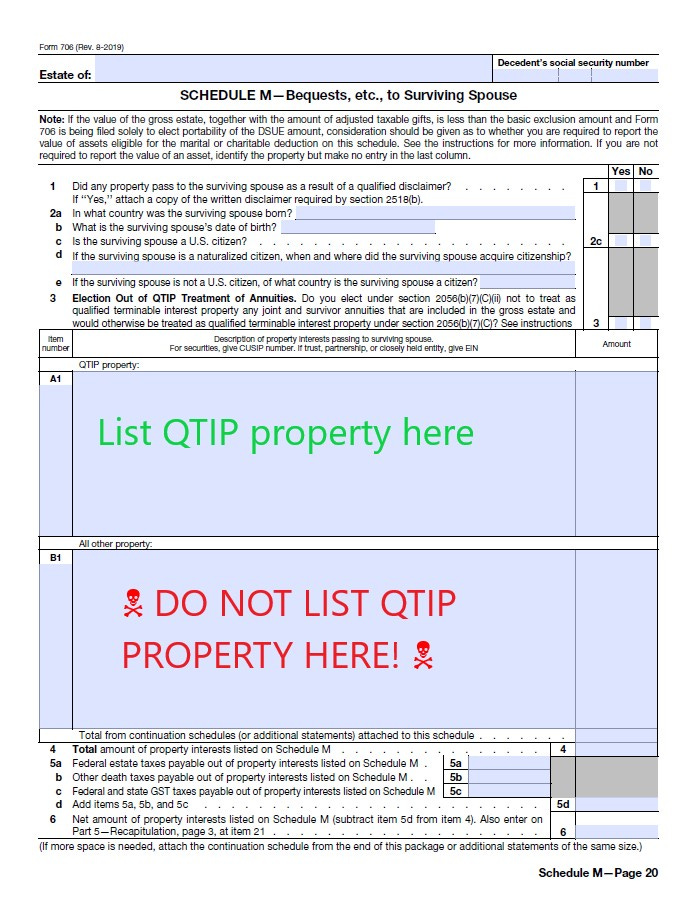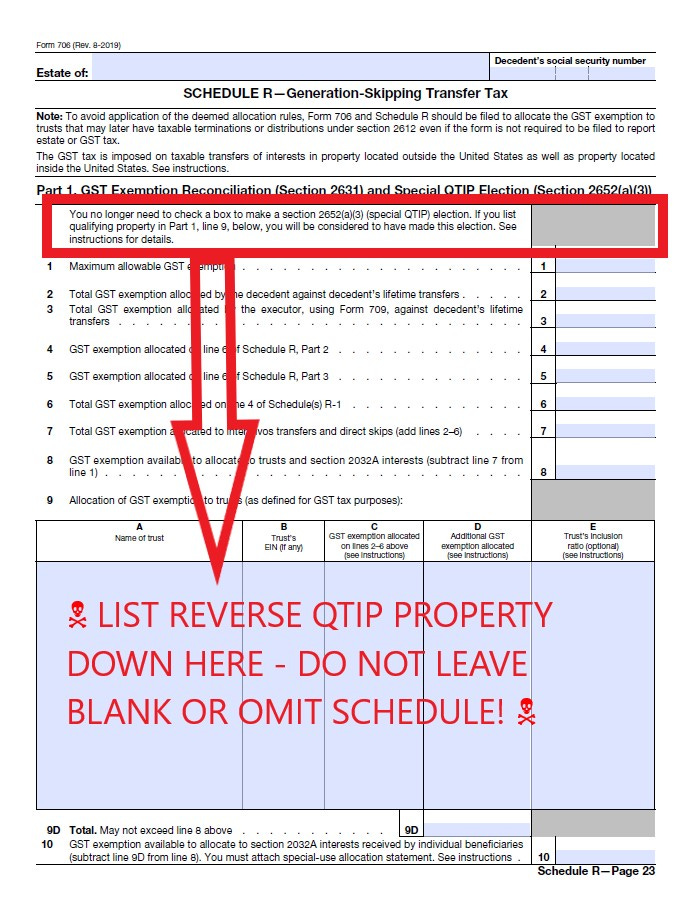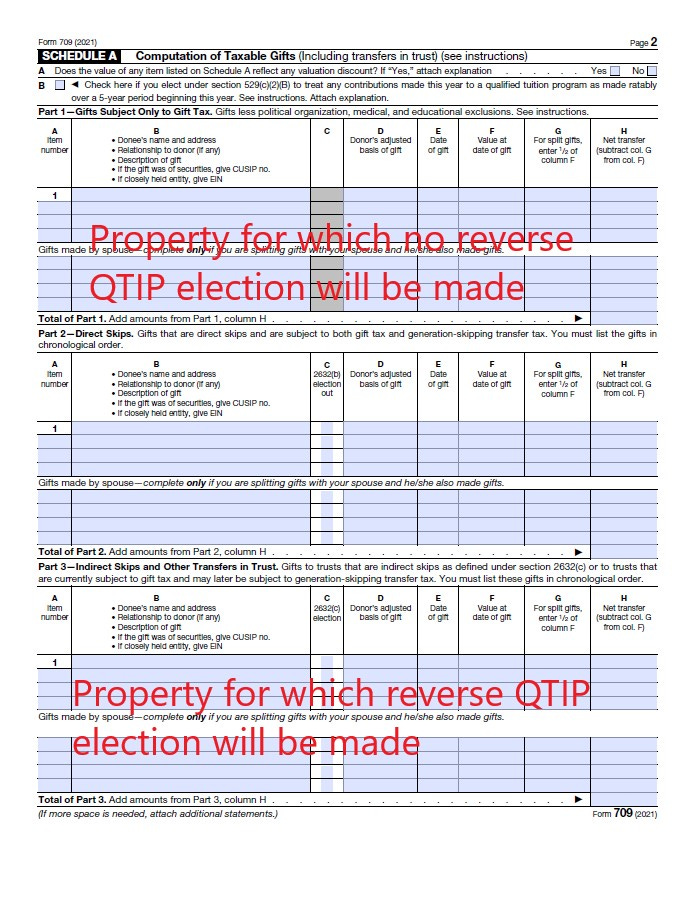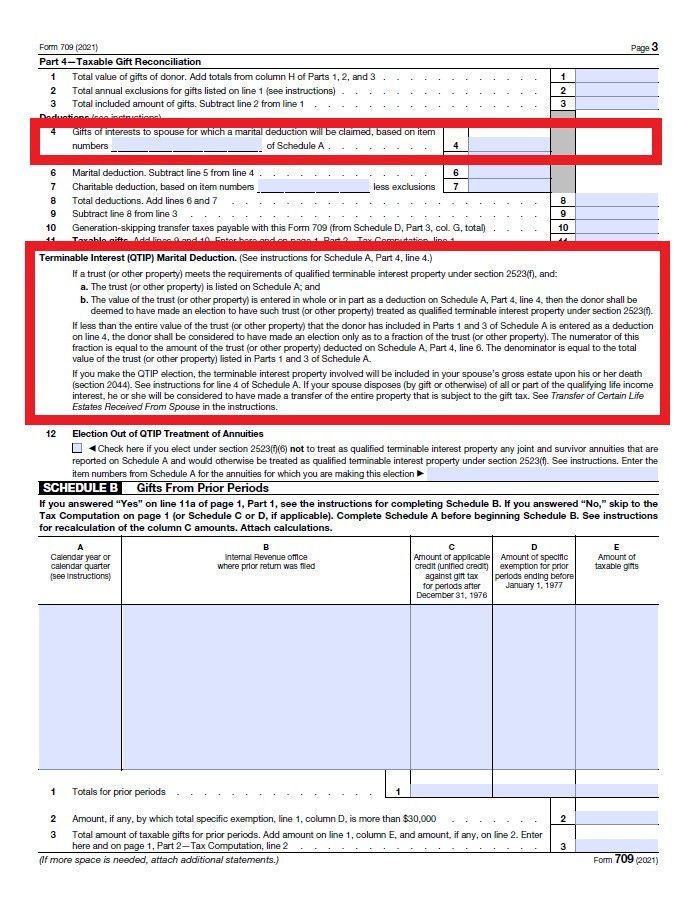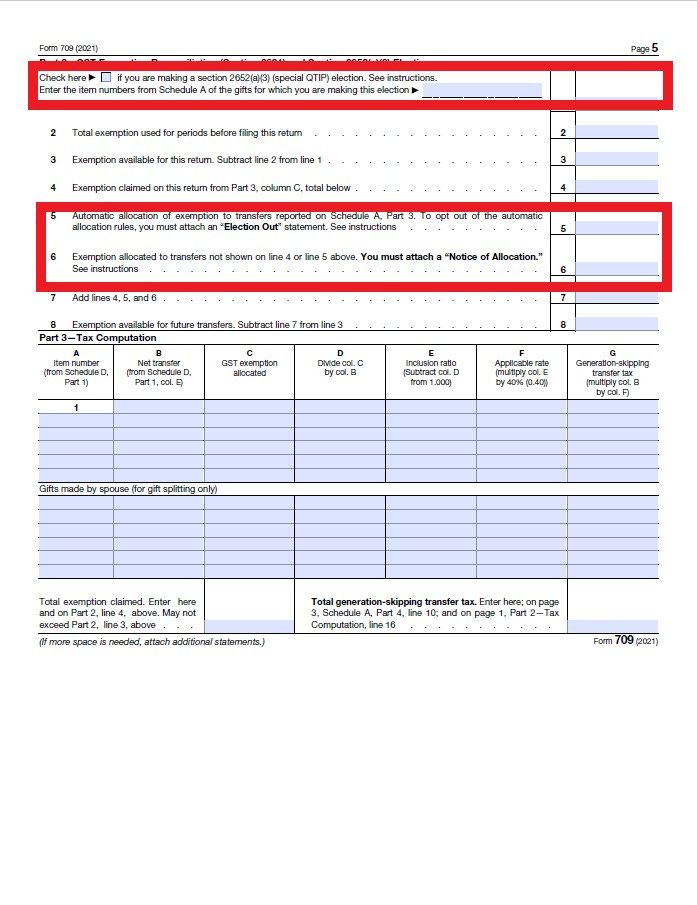A QTIP for QTIP Trusts - Making Sure The Election is Correct
Things are not as simple as checking the box...
A quick note - when I wrote this article in 2022, I was approaching it from an academic perspective. But, I have since encountered multiple 706s with the reporting errors described herein. I have a feeling that a lot of experienced practitioners got used to general power of appointment marital trusts, which are different from QTIP marital trusts in that there is no election to be made. This may have resulted in a lot of misreporting, especially for QTIP marital trusts that are treated like general power of appointment marital trusts on the 706 (despite a lack of a general power of appointment). Long story short, as a refresh of this article, I caution you to take heed of existing marital trusts and ascertain how the marital deduction was elected and applied.
Table of Contents
Intro and Background
Some recent Private Letter Rulings have highlighted the procedural importance of the QTIP election for qualifying trusts. We will discuss these elements, but a refresher may help.
Transfers to a spouse generally are exempt from gift or estate tax, through the operation of an unlimited marital deduction. This is not a tax avoidance mechanism, however; instead it acts to defer estate tax. The trade-off is the assumption by the IRS that they will get to collect the deferred gift or estate tax upon subsequent transfers during the life of the donee spouse, or upon the death of the donee spouse.
This deferral, however, can be lost when certain types of trusts are used. The gift and estate taxes only apply to individuals, and not to trusts (unless an individual has certain powers over a trust that rise to the level of “property ownership” under the Internal Revenue Code). Because of this dynamic, the marital deduction is denied for transfers in trust unless the deferred estate tax will be collected from the trust at some point in the future.
There are a variety of ways to get there, but IRC Sections 2523 (for lifetime transfers to a spouse in trust) and 2056 (for testamentary transfers to a spouse in trust) contain nearly identical requirements. While this is not an all-inclusive list, the requirements generally include:
The beneficiary spouse must be the sole beneficiary for life;
The beneficiary spouse must receive all trust net (accounting) income, at least annually;
The beneficiary spouse must have the right to convert unproductive trust property into productive (i.e., income-producing) property; and
There must be a hook to include the property in the gross estate of the beneficiary spouse, or treat relinquishments of rights in the trust as a gift of trust principal by the beneficiary spouse.
It is this hook in the last point that distinguishes different forms of qualifying trusts. But, it is important to note that these rules do not just apply to trusts - they apply to any property interest that is a “terminable interest.” In other words, they apply where a spouse’s interest in property will terminate either as a result of death, or the passage of time. For this reason, the requirements above also mirror, and can apply to, a life estate for a spouse with a qualifying hook.
The hook comes in two forms:
A general power of appointment over the trust or property; or
The making of a qualified terminable interest property, or “QTIP,” election which invokes IRC Sections 2044 and 2519.
In operation, these hooks operate in two separate ways. Where a spouse has a general power of appointment, all of the property that meets the above requirements and which is subject to the general power of appointment will automatically qualify for the marital deduction. However, where there is no general power of appointment, a QTIP election must be made on the return upon which the transfer for the spouse’s benefit is reported.
On the other hand, if there is a general power of appointment, you cannot make a QTIP election.
The QTIP election can apply to some, or all, of the trust property when made, but it must be made in order to qualify the elected property for the marital deduction. This election has a two-fold effect. One, it applies the marital deduction, such that the donor spouse’s applicable credit is not applied to the gift/estate tax which would otherwise result from the transfer. Two, it causes the beneficiary spouse to become the deemed owner of the property for transfer tax purposes under IRC Sections 2044 and 2519.
As a result, when the beneficiary spouse dies, all property for which a QTIP election was made will be included in the spouse’s gross estate under IRC 2044. Similarly, if the beneficiary spouse releases their rights to the trust during life (other than through a qualified disclaimer), such spouse will be treated as having made a gift of the underlying trust principal (instead of just their income interest) under IRC 2519.
Hence, through the QTIP election, we invoke the deferral mechanisms needed to apply the marital deduction. But, it is the making of the election that invokes angst. This election requires the filing of a gift tax return for transfers during the donor spouse’s life, or an estate tax return for transfers at the donor spouse’s death. When there is a disconnect between estate planner and tax filer, this can create even more angst as we will see below.
Against this backdrop, it is helpful to explore the election mechanics.
IRS Form 706 Election
The QTIP election on IRS Form 706 involves the designation of QTIP property on Schedule M. But, importantly, this Schedule has a space for both QTIP and non-QTIP property. The non-QTIP property portion deals with transfers directly to a spouse, such as beneficiary designated 401(k)’s and joint tenancy interests. Here is a quick snapshot:
Recently, in PLR 202242002, this Schedule was not correctly filled out. Similarly, in PLR 202244007, the election was just not made. The result? Once the error was discovered, it was too late to amend the return. So, late election relief had to be requested, and luckily for the taxpayer it was granted.
This wasn’t the end, however. Recall how the beneficiary spouse becomes the deemed transfer tax owner of QTIP property under IRC Sections 2519 and 2044? This typically means that the donor spouse cannot allocate any generation-skipping transfer (GST) tax exemption to the QTIP trust, as the funding creates an estate tax inclusion period. However, IRC 2652(a)(3) allows another election to “reverse” the estate/gift tax QTIP election solely for GST tax purposes. This reverse QTIP election must also be made on the estate/gift tax return containing the QTIP election.
But, much like the Schedule M, the reverse QTIP election requires again listing the QTIP property - this time on Schedule R of Form 706. This image shows where to list the property:
PLR 202242002 cited above also completely lacked this Schedule R. But, again, late election relief was granted for the failure to make the reverse QTIP election.
The lessons?
Make sure QTIP property is expressly listed on the top part (not the bottom part) of Schedule M.
Make sure Schedule R is actually completed.
List out reverse QTIP property on the bottom part of Schedule R.
This also raises the question of when the election must be made? If a return is required under IRC 6018 (due to the sum of the gross estate and adjusted taxable gifts exceeding the basic exclusion amount), the typical due dates apply, and amendments to correct a flawed QTIP election must be made during this time. If, however, no return is required, you must balance the purpose of filing.
If the return has the primary purpose of a portability election, you now have 5 years from date of death to file under Rev. Proc. 2022-32.
However, if the return is solely for making the QTIP election, there does not seem to be a deadline. I would not encourage you to test this, but Treas. Reg. 20.2056(b)-7(b)(4) provides:
The election referred to in section 2056(b)(7)(B)(i)(III) and (v) is made on the return of tax imposed by section 2001 (or section 2101). For purposes of this paragraph, the term return of tax imposed by section 2001 means the last estate tax return filed by the executor on or before the due date of the return, including extensions or, if a timely return is not filed, the first estate tax return filed by the executor after the due date.
IRS Form 709 Election
Form 709 differs greatly from the QTIP election approach used on Form 706. While the 706 required the listing of property on Schedule M, no such schedule shows up on Form 709. Instead, the property in the QTIP trust should be listed on Schedule A, Part 1 (or Part 3 if you will make the reverse QTIP election) as part of the normal gift tax return filing:
Then, you run into the mechanics of the election itself. As seen below, this requires the listing of the specific items, and dollar amounts, of Schedule A transfers to a QTIP-eligible trust for which you are actually making the QTIP election. In other words, the election is made by listing a dollar amount in Schedule A, Part 4, Line 4:
As you can see in this form description, this results not in certain property being QTIP or non-QTIP property as you would have in a testamentary QTIP, but instead views the inter vivos QTIP through the lens of a fractional or whole share to which the marital deduction is applied through the QTIP election.
But, if this wasn’t confusing enough, the reverse QTIP election doubles-back to an item-by-item approach, with GST exemption then being automatically or manually allocated to the reverse QTIP property in the same amount indicated on Schedule A, Part 4, Line 4, as seen below:
So, as you can see, there are many traps for the unwary. In addition, we lose the late return option we saw with Form 706. Treas. Reg. 25.2523(f)-1(b)(4) generally requires a timely filed return (with extensions), stating:
An election under section 2523(f)(2)(C) (other than a deemed election with respect to a joint and survivor annuity as described in section 2523(f)(6)), is made on a gift tax return for the calendar year in which the interest is transferred. The return must be filed within the time prescribed by section 6075(b) (determined without regard to section 6019(a)(2)), including any extensions authorized under section 6075(b)(2) (relating to an automatic extension of time for filing a gift tax return where the donor is granted an extension of time to file the income tax return).
Conclusion
Drafting, and filing, of the QTIP trust and QTIP election often diverge. It is important for everyone to be on the same page, and sometimes the extra cost is worth having a second set of eyes on the Form 706 or 709 when filed. Otherwise, you run into the added expense of seeking late election relief.



